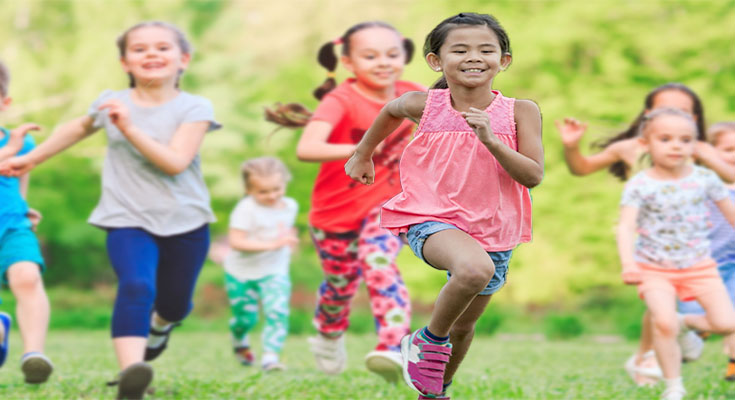Playing inside or out, the benefits of physical activity for children are enormous. With many different opportunities every day to help your child to learn and grow, being active is one of the most important. Right from birth, a baby is active at their own level, and this continues through all a child’s developmental stages.
While most young children require little encouragement to be physically active, it helps to have a few activities and ideas up your sleeve to tempt them with if required. As well as sharing these ideas below, we’ve also made a list of the key benefits of physical activity for children too.
Key Benefits of Physical Activity for Children
Like adults, children learn new skills by doing them. The early years of a child’s life are crucial for their development and in helping them develop the important skills they’ll need both now and into the future. For a young child, physical activity involves mostly playing, and it is vital that we support a child’s urges and play patterns by providing a suitable play environment.
We know that active movement also helps little (and big) bodies in many ways, including:
- Maintaining a healthy body weight – it is well known that a sedentary lifestyle often results in weight gain.
- Communication and interpersonal skills – through play, children learn about how people interact with one another. Role modelling things such as sharing toys and waiting turns to your child can help with this.
- Mental health – being active plays a significant role in mental health, with many younger children showing they are happier and less anxious when playing and moving regularly.
- Motor skills – both fine and gross motor skills improve when a child is playing, especially with regular practice.
- Sleeping patterns – regular physical exercise helps a child to develop and maintain good sleeping patterns.
- Cardiovascular fitness – running, jumping, climbing, skipping, swimming and even walking help to improve the cardiovascular fitness of all children.
- Posture, flexibility, strength and balance – little muscles and bones, plus the connection between the brain and body, are all strengthened through physical activity. Encouraging your child to try things multiple times and celebrating small achievements helps foster their confidence and a positive attitude towards being active.
Ideas for Encouraging Physical Activity for Children
With health professionals recommending three or more hours per day of physical activity for a child under five years, and 60 minutes for children five and older, here are some active ideas:
- Gardening – digging holes never grows old, and neither does planting seeds and watering plants.
- Vacuuming – many young children love either pushing the vacuum or being play-chased by one. Parents, we will burst your bubble, and let you know their passion for vacuuming is unlikely to continue!
- Walking – head out to the local park or playground. Explore all the little nooks and cranny’s, weird looking trees and wildlife.
- Ball games – throwing and kicking balls around (or balloons inside) can be adapted to suit your child’s age and developmental stage.
- Kite flying – older children can help with getting the kite off the ground and holding the string. Then there is the fun to have chasing the kite from the ground as it blows in different directions!
Your local community centre, library or parents’ group are likely to have even more ideas on physical activity for children. Asking other parents for ideas and simply observing how they play with their children may also be useful in identifying new and exciting activities too!





